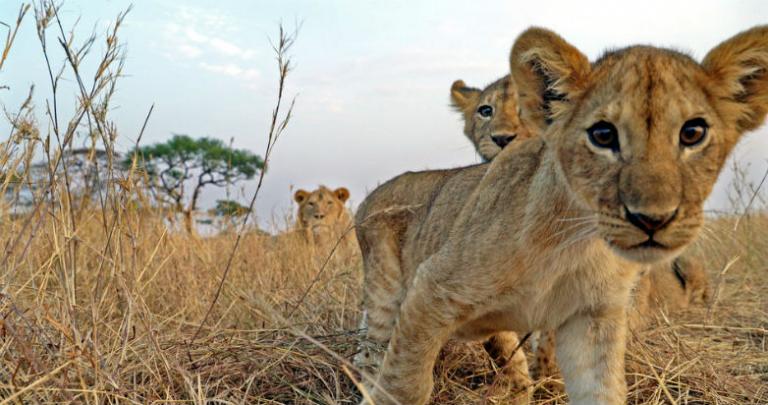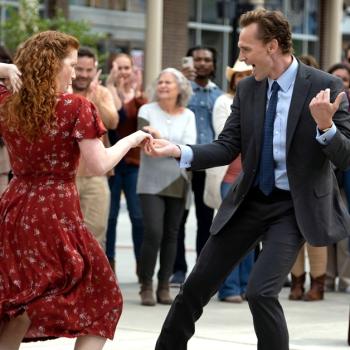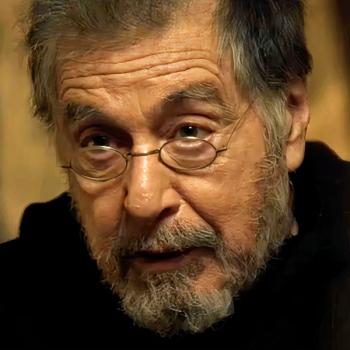Disney’s retooling of The Lion King was touted as “live-action,” but other than a single shot of the African plains, it’s all computer animation. Discovery’s six-episode Serengeti, premiering Sunday, Aug. 4, may tell a dramatized tale, but every shot is real.
Produced for Discovery and its partner, the BBC, by British talent manager, producer and entrepreneur Simon Fuller and natural-history producer John Downer, and narrated by Kenyan actress Lupita Nyong’o, Serengeti goes beyond the usual natural-history documentary to craft a narrative about animal families on the Serengeti plains of Tanzania.
With sponsorship from Jeep, the first episode screens commercial-free at 8 p.m. ET/PT. Last week, Discovery took over the Wallis Annenberg Center for the Performing Arts in Beverly Hills to screen the first episode for press and friends with a live orchestra and vocals by Lola Fruchtmann (daughter of singer Annie Lennox).
Using drones, hidden cameras, cameras in vehicles, remote cameras and a variety of other techniques, Downer and his team got up-close-and-personal with lions, hyenas, elephants, zebras, wild dogs, baboons and more. From the footage, based on the animals’ natural behaviors, they’ve created an emotional narrative centered on the theme of family.
The stories followed are:
Kali the Lioness: Having borne cubs to a male other than the one in her pride, Kali is outcast and must raise and feed her cubs on her own.
Shani the Zebra: The lead mare of her herd, she guides them through dangers.
Kikay the Cheetah: A first-time mother must learn fast to feed and protect her cubs.
Bakari the Baboon: Attached to a female claimed by the head of his troupe, Bakari faces loneliness and heartbreak.
Jasari the Wild Dog: A proud father takes risks to ensure that his family survives.
Nalla the Elephant: A herd leader and a new mother, she also deals with her adolescent son Tembo, who must find his own way in the world.
Zalika the Hyena: The daughter of the pack matriarch, she must grow up fast when tragedy strikes.
Are the stories sentimental and anthropomorphized? Absolutely. Will the kids in the family love it? Very probably. The show does show predation, but not to the level of some of the red-in-tooth-and-claw nature shows. There are also sad and scary moments, so parents of very little ones may want to be careful.
At the recent TV Critics Association Press Tour in Beverly Hills, Downer spoke about the philosophy behind Serengeti:
You have to go out with a plan, and we knew we were going to be filming for nearly two years, but we were telling the story of one year. So. we knew that there was going to be a seasonal arc that was going to drive the narrative.
I knew what was likely to happen, but that’s not that interesting, because it’s what you don’t know is going happen that changes everything. We had a very fluid script and that was informed by the behavior of the animals we were following, by events that happened that were just so surprising you could never, ever script them.
If I wrote a lot of those scenes into the script at the start, well, it would just be invention upon invention because so many of the most amazing moments, I could never have predicted.
So the way we built the stories was to follow these characters, follow storylines, but also incorporate events that were life-changing for any animal. So that became the style of it.
We like to think the animals were telling their story, because we didn’t force a narrative on them, but we took the narrative from them. That then became the way we told the story. It was totally fresh. But what we hope to do through it and when people see it is get to a bigger truth that only a kind of more dramatized approach could take us to.
Added Fuller:
The original thought was that we wanted to tell the story of the animals, and family is at the heart of most stories. We had to think, “Well, what families do we want to follow?”
So, we identified initially five families and that gave us the basis to then follow them over the course of the two years.
In response to my question about the balance of staying true to the animals’ behavior and still telling a dramatic story, Downer said:
Obviously, if we’re going to make a drama, we have to structure it differently than you would a documentary. But a documentary can only do so much because there are all these moments never to be missed.
If you look over the episodes as a whole, you get a feeling and an understanding of the place that you couldn’t get through a normal documentary. All those lines of storylines intermesh, and you see how these animals react with each other and how complex that world is, but also how connected it is. That’s something we wanted to really demonstrate; that in that place, all these amazing animals, all their lives connect. The actions of one animal affect everyone else, but somehow it comes together in this incredible ecosystem.
…
And that feeling of manipulation — I mean we’re trying not to do that, we’re trying to be informed by the actual animals — but you’re just sucked into the stories, like we get sucked into the stories when we’re filming.
Here’s a peek at Serengeti:
https://youtu.be/MALrUL40kBc
Image: Discovery
Don’t miss a thing: Subscribe to all that I write at Authory.com/KateOHare
And, head over to my other home, as Social Media Manager at Family Theater Productions; and check out FTP’s Faith & Family Media Blog, and our YouTube Channel.















